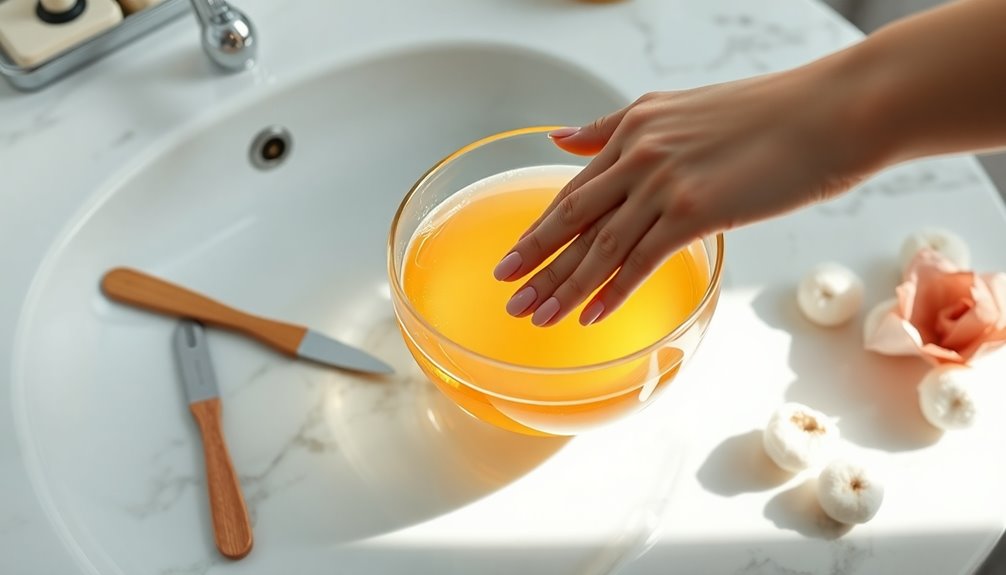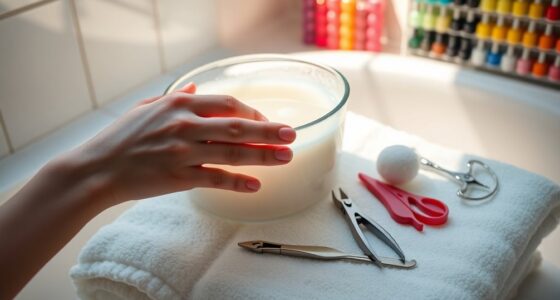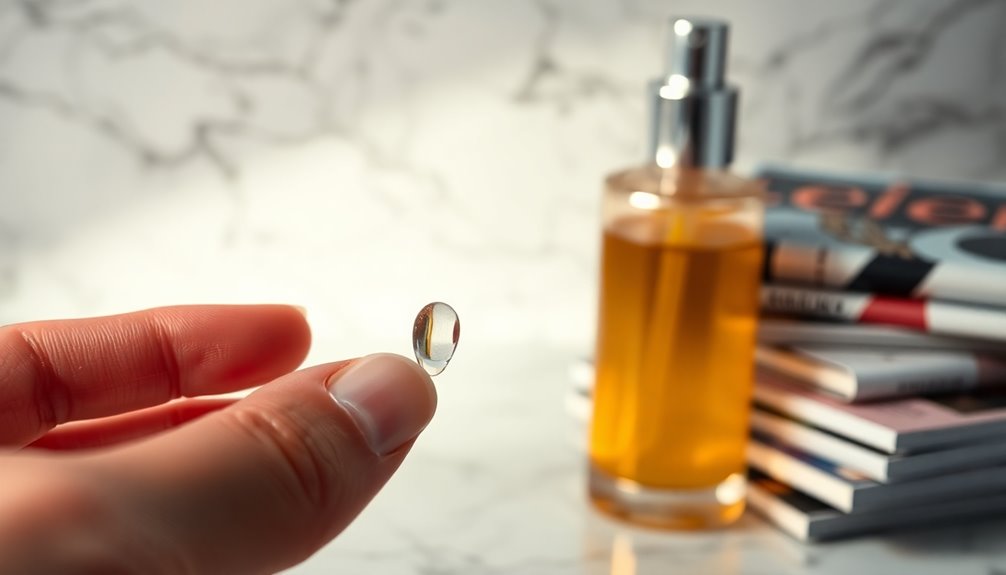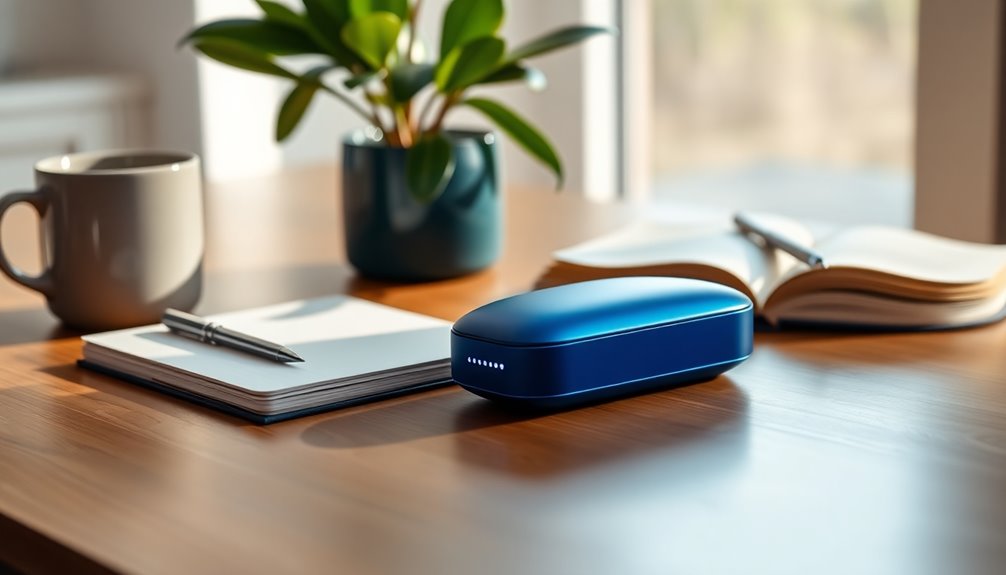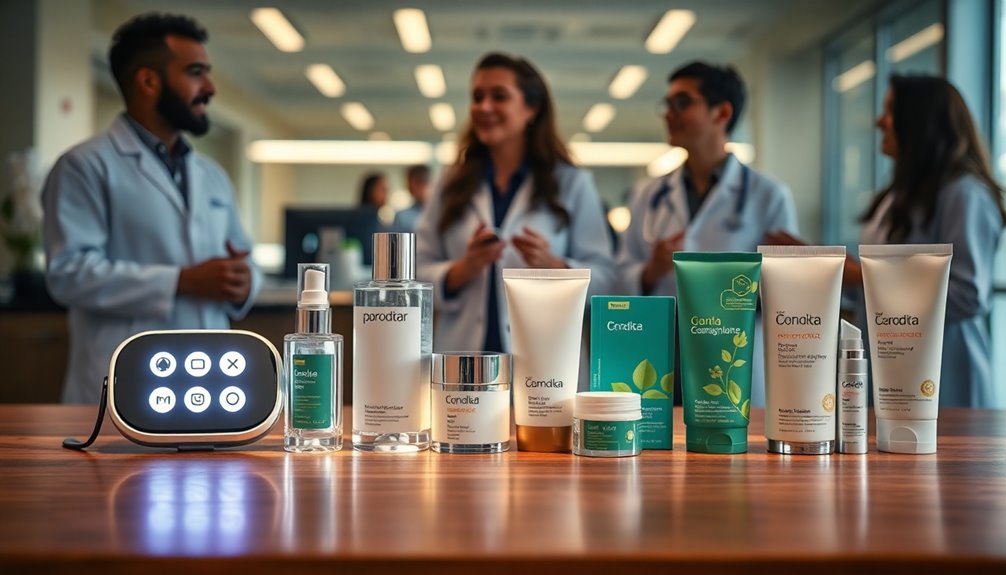To remove acrylic nails, start by trimming them with clippers for better acetone penetration. Next, use a nail file to thin the acrylic layers. Soak cotton balls in 100% acetone, place them on your nails, and secure them with tinfoil. Wait for the acrylic to soften, then gently lift it off using a cuticle pusher or tweezers. After this, caring for your natural nails is essential, and you'll uncover more helpful tips shortly.
Key Takeaways
- Trim acrylic nails with clippers to enhance acetone penetration before soaking.
- Thin the acrylic layers using a nail file for easier removal during soaking.
- Soak cotton balls in 100% pure acetone and secure them on nails with tinfoil.
- Wait for the acrylic to soften, then gently pry off with a cuticle pusher or tweezers.
- Post-removal, buff nails, apply cuticle oil, and use hand cream to restore moisture.
Tools Required for Acrylic Nail Removal
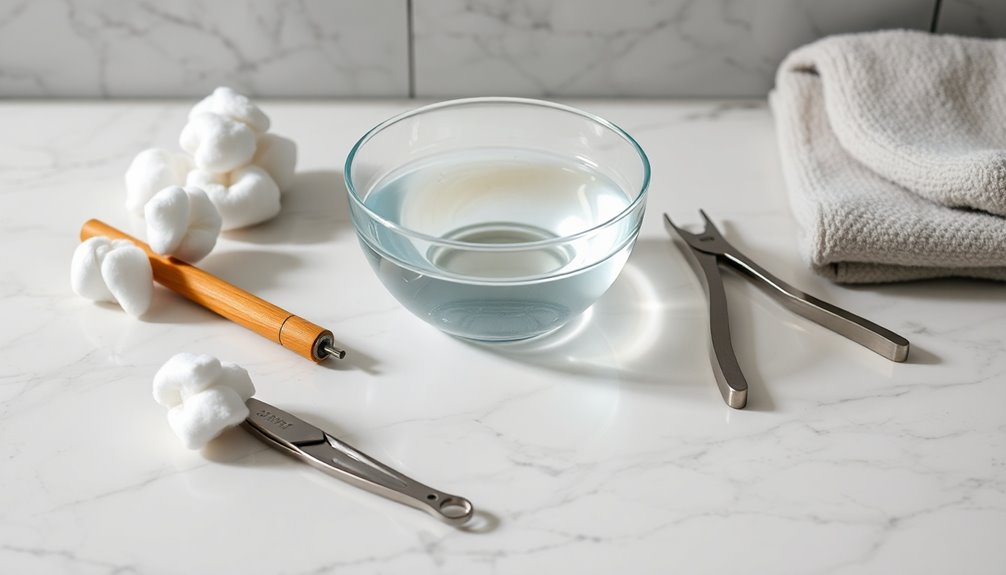
When you're ready to remove your acrylic nails, you'll need a few essential tools to make the process smoother.
Start with nail clippers to trim down your extensions, which helps acetone penetrate more effectively. A nail file with two grits (100/80 grit) is vital for thinning the acrylic before soaking.
You'll also need 100% pure acetone, as regular polish remover won't do the job. Gather cotton balls or lint-free pads to soak in the acetone and apply to your nails.
Tinfoil or soak-off clips will keep everything secure during the soak. Finally, a cuticle pusher is important for gently scraping off the softened acrylic once the soaking process is complete, ensuring a safe acrylic removal experience. Additionally, maintaining skin health is crucial during the removal process to avoid irritation from the acetone.
Step-by-Step Guide to Removing Acrylic Nails
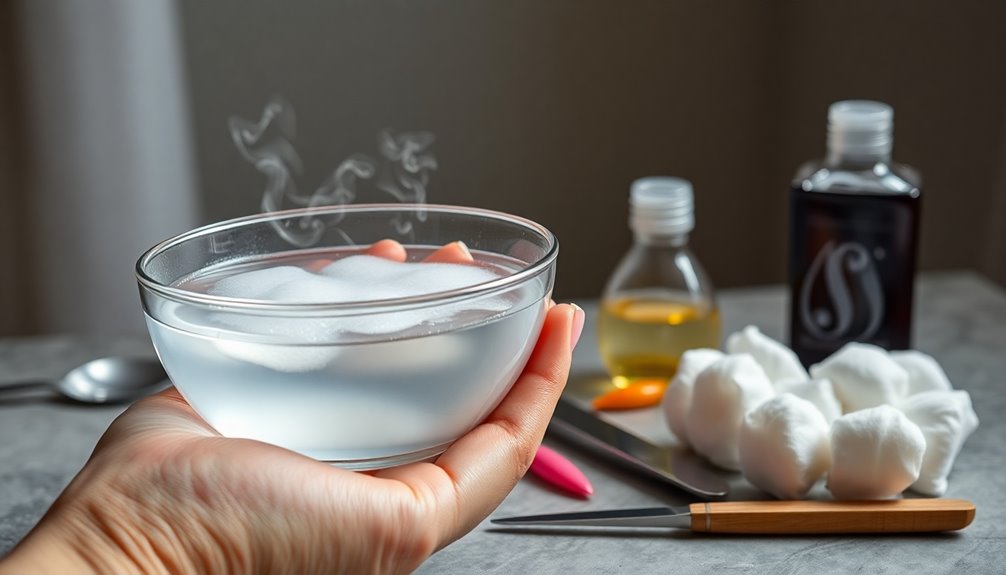
Now that you have your tools ready, it's time to start removing those acrylic nails.
You'll want to follow the steps carefully to guarantee a smooth process and protect your natural nails. Using essential oils for nail care can help soothe any irritation during the removal process.
Don't forget about aftercare; it's vital for keeping your nails healthy once the acrylics are off.
Required Tools and Products
Removing acrylic nails requires specific tools and products to guarantee a safe and effective process. Here's what you'll need:
| Tools/Products | Purpose |
|---|---|
| Nail Clippers | Trim extensions before removal |
| Nail File (100/80 grit) | Thin the acrylic for easier soaking |
| 100% Acetone | Dissolve acrylic effectively |
| Cotton Balls | Soak in acetone |
| Aluminum Foil/Soak-off Clips | Secure cotton balls in place |
| Nail Buffer | Smooth your natural nails post-removal |
Make sure to set up a well-ventilated workspace to minimize exposure to acetone fumes. Having these tools ready will streamline the removal process and help protect your natural nails. Proper airflow around the unit can enhance performance in a well-ventilated area.
Aftercare for Natural Nails
After you've successfully removed your acrylic nails, it's important to focus on the health of your natural nails.
Start by gently buffing your nails to eliminate any acrylic residue and smooth rough spots.
Next, apply cuticle oil generously to nourish your cuticles and nail beds, aiding in recovery.
To combat dryness caused by acetone, use a moisturizing hand cream on your hands and nails.
Consider incorporating a nail strengthener into your daily routine for at least a week to restore your nails' integrity and prevent brittleness.
Additionally, you may want to explore cruelty-free products that can enhance nail health without harmful ingredients.
Finally, monitor the condition of your nails for signs of discoloration, cracking, or splitting.
Taking these steps will help your natural nails recover fully and regain their strength.
Alternative Methods for Acrylic Nail Removal
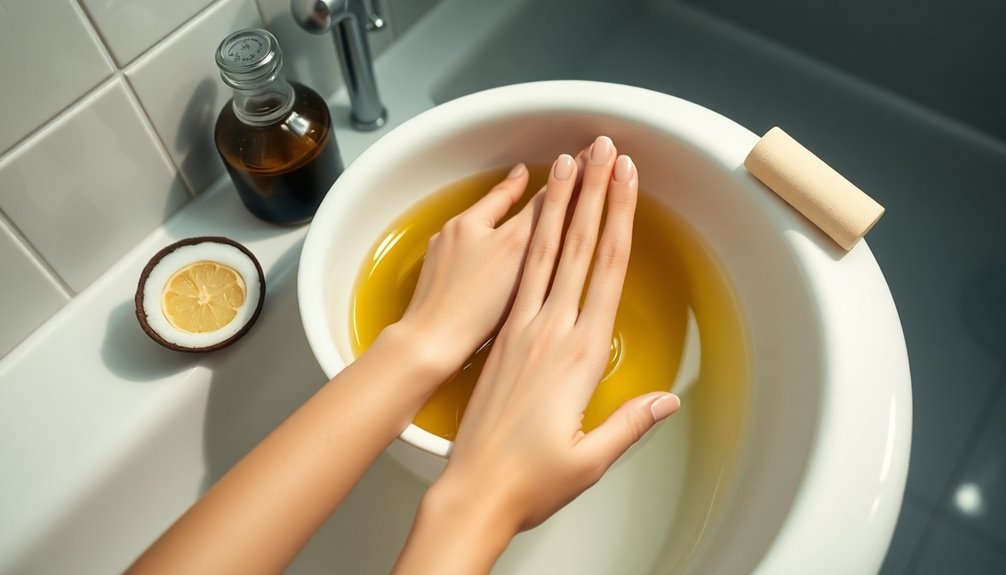
While many people choose acetone for acrylic nail removal, several alternative methods offer gentler options that can be just as effective.
One method involves soaking your nails in a bowl of acetone-free remover for 30 to 40 minutes. This helps remove acrylic nails without damage. As you soak, gently pry the edges of the acrylic with a cuticle pusher to loosen them. Once softened, you can use tweezers to lift and remove the acrylics.
If you're looking for a quicker option, try the dental floss method—slide dental floss under the acrylic and use a sawing motion to detach them, but only if they're already loose. Additionally, it's important to note that consultation with a dermatologist is advised for individuals with sensitive skin before using any removal method.
Aftercare for Natural Nails Post-Removal
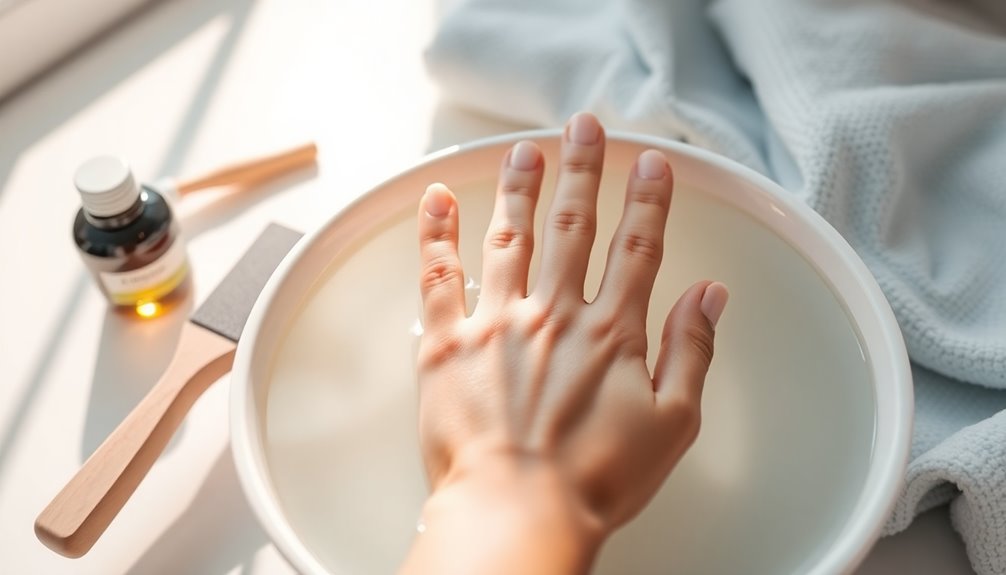
Once you've successfully removed your acrylic nails, taking care of your natural nails is essential for their recovery.
Start by gently buffing the nails to eliminate any residue and smooth rough spots. Daily application of cuticle oil will nourish and hydrate both your cuticles and nail beds, promoting healthy nail growth.
Don't forget to use a moisturizing hand cream after removal to counteract the drying effects of acetone, providing necessary hydration for your skin.
To strengthen your nails, consider a nail strengthener or hardener for at least a week to prevent brittle nails. Additionally, ensure that your nails are well-nourished with proper hydration and nutrients, much like how dogs benefit from a balanced diet.
Keep an eye out for any signs of damage, like discoloration or splitting, as these may indicate the need for additional care in your post-removal routine.
Tips and Precautions for Safe Removal
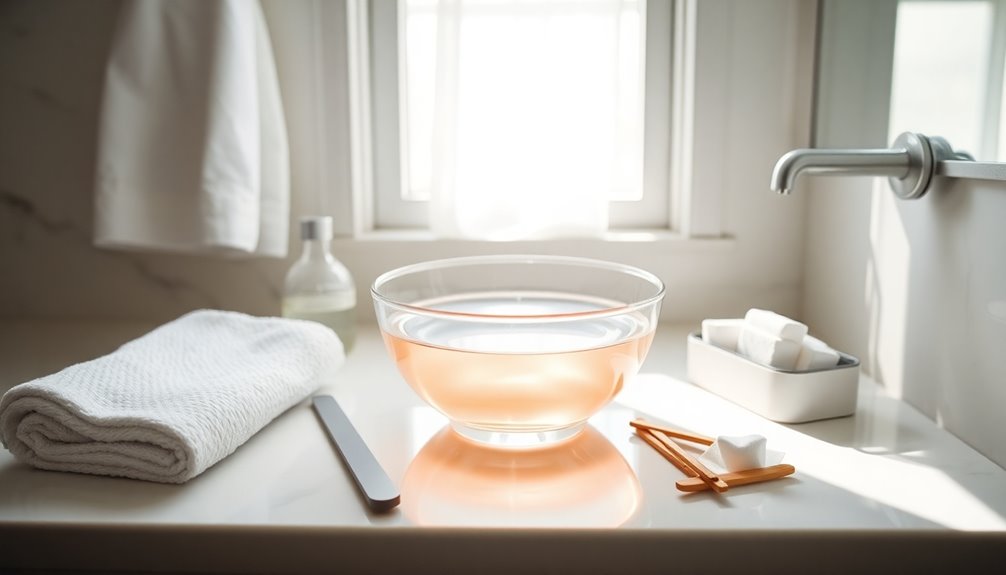
To guarantee a safe and effective acrylic nail removal, it's essential to follow specific tips and precautions.
First, avoid forcefully peeling off your acrylic nails; this can damage your nails considerably. Instead, use a pure acetone soak to dissolve them.
To remove acrylic nails fast, consider applying petroleum jelly around your nail edges to protect the skin from drying out. Use a glass or ceramic bowl for the soak, as plastic can react with acetone.
After removal, focus on nail care to keep your nails healthy. Regularly apply cuticle oil and hand cream to nourish and hydrate your nails and skin, which may become dry from the acetone exposure. Additionally, be mindful of the effects of styling products on your nails, as some may cause further damage.
Taking these steps will guarantee a smoother removal process.
Expert Recommendations and Reader Experiences
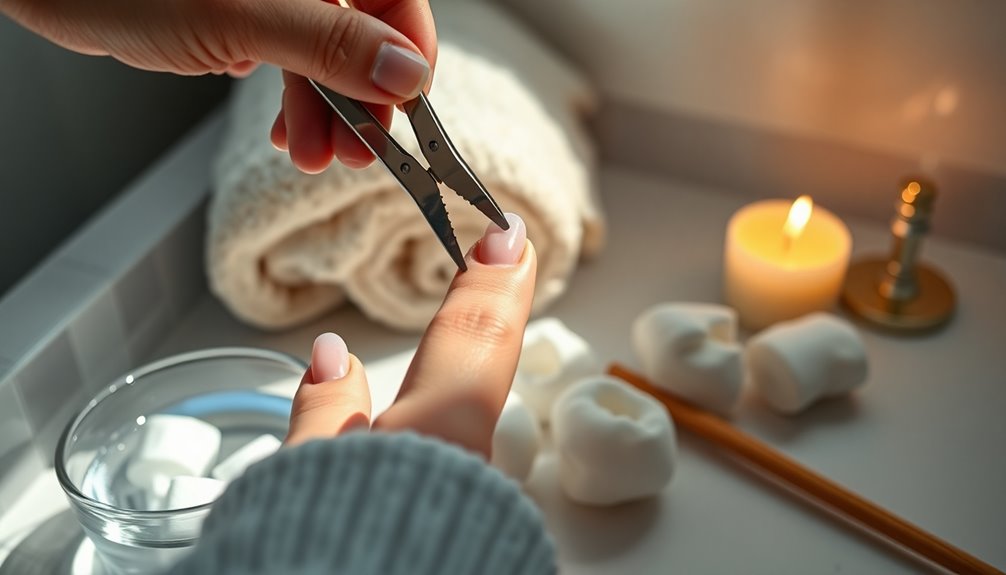
When it comes to removing acrylic nails, expert recommendations can greatly enhance your experience. Nail tech Kristin Pulaski suggests gently filing off the first few layers of acrylic with an e-file, ensuring it doesn't touch your natural nails.
Barbie Ritzman emphasizes using 100% pure acetone, cotton balls, aluminum foil, and a cuticle pusher for effective at-home removal. Selecting high-quality acetone is essential, as noted by Anonymous WikiChinchilla, while WikiTigerJammer304 advises cutting down your acrylics first to simplify the process.
Many readers caution against peeling off acrylics, which can damage your natural nails. Patience is key in removing acrylics safely, so remember to soak in acetone and allow the process to work effectively. Additionally, it's important to maintain a healthy credit score, as this can influence your ability to finance future beauty treatments.
Frequently Asked Questions
How Do I Take My Acrylic Nails off at Home?
Taking off acrylic nails at home can feel like peeling away layers of a well-crafted story.
First, trim them down, then gently file the shiny topcoat to help acetone work its magic.
Soak cotton balls in acetone, wrap them around your nails, and let it sit for 20-30 minutes.
Afterward, gently push off the softened acrylic.
Finally, buff your natural nails and apply cuticle oil to restore their luster.
You've got this!
What Is the Least Damaging Way to Remove Acrylic Nails?
The least damaging way to remove acrylic nails involves a careful approach.
Start by trimming the nails down to your natural length. Then, gently file the surface to help the acetone penetrate better.
Soak cotton balls in 100% pure acetone and wrap them around your nails with aluminum foil. Let it sit for a while, and when you're done, moisturize your nails with cuticle oil and hand cream to promote healthy recovery.
How Do Salons Remove Acrylic Nails?
Picture the soothing atmosphere of a salon, where skilled technicians transform your nails.
They start by trimming the acrylic down, then gently file the top layer, creating a soft hum of the electric file. You feel the warmth of acetone-soaked cotton balls wrapped snugly in aluminum foil, working their magic.
After a while, they carefully scrape away the softened acrylic, revealing your natural nails, and finish with a nourishing oil, restoring their luster.
How Do I Get My Nails Back to Natural After Acrylics?
To get your nails back to natural after acrylics, start by applying a nail strengthener daily for at least a week.
Use cuticle oil or serum to hydrate your cuticles and nails.
Give your nails a break from enhancements for two to three weeks to let them breathe.
Gently buff any rough spots for a smoother look, and keep an eye out for discoloration or brittleness, consulting a pro if needed.
Conclusion
Removing acrylic nails can feel challenging, but with the right approach, it's a breeze. While the allure of beautifully manicured nails might tempt you to keep them longer, the health of your natural nails should always come first. By following the proper techniques, you can shift from the striking elegance of acrylics to the serene simplicity of your natural nails, ensuring they remain strong and vibrant. Embrace the change, and your nails will thank you in the long run!
